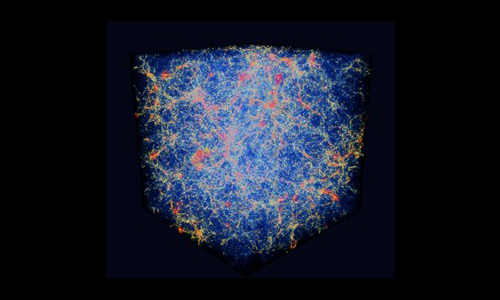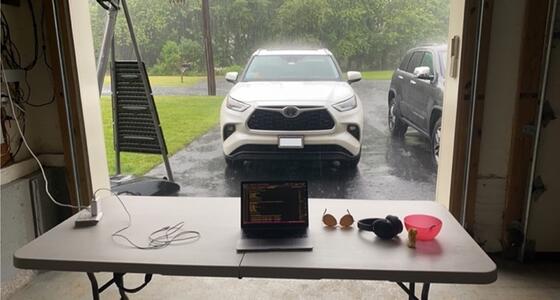Ryan Flynn

I am continuing my work from the spring with Professor Daisuke Nagai’s Computational Cosmology group this summer, in collaboration with Dr. Nir Mandelker (a former Yale postdoc associate and now at KITP/UCSB) and Dr. Joeseph Burchett (New Mexico State University).
My research focuses on using cosmological simulations to study the structure of the cosmic web. On large scales, the structure of the universe is made up by filaments, sheets, voids, and dark matter halos which together form a web-like structure. A powerful tool for studying this structure is cosmological simulations. These simulations, which can be dark matter only or include baryonic matter (gas and stars), are run from initial conditions in the standard cosmology with dark energy and dark matter.
To analyze these simulations, I am using both Yale’s Grace High-Performance Computing cluster and the CosmoVis visualization tool. Grace is necessary for the computationally intensive quantitative analysis that I need, while CosmoVis is important for visualizing the large, rich, and complex cosmic structures produced by modern cosmological simulations. In the image shown, a temperature map of the cosmological simulation volume clearly shows the cosmic web structures.
My research project focuses on studying the intergalactic medium (IGM), the diffuse medium that resides outside of dark matter halos and makes up a significant fraction of the “missing baryons” in our universe. A plethora of multi-wavelength astronomical observations are underway to detect and characterize the properties of IGM. Understanding astrophysical processes that govern the formation and evolution of the IGM is therefore one of the new frontiers at the crossroads of cosmology and galaxy formation. My summer project focuses on studying the properties of IGM around pairs of massive halos at high redshift and how these systems will evolve to form groups and clusters in the local universe, thereby improving models of structural growth on galactic and cosmic web scales.
Due to the remote nature of the work, I am conducting my research at home. Shown below is my rainy-day office (aka the garage).
